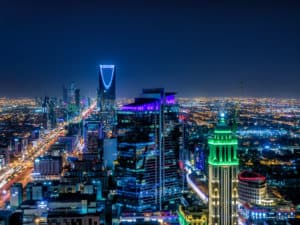
Riyadh, Saudi Arabia
Saudi Arabia’s Ministry of Finance and National Debt Management Centre (NDMC) last week signed up five new banks as primary dealers for its local government debt instruments, as it positions itself to grow secondary market trading.
The banks, which include BNP Paribas, Citigroup, Goldman Sachs, JP Morgan and Standard Chartered, all have an existing presence in the Kingdom. The agreement now adds them to the government’s Primary Dealers’ Program, which already lists local financial institutions Saudi National Bank, Saudi British Bank, Bank AlJazira, Alinma Bank and Al Rajhi Bank.
Applications by investors for subscription to the primary market for local government debt instruments are submitted to the NDMC through the primary dealers, who are contracted on a scheduled monthly basis.
According to NMDC, the move is designed to “enhance access to local debt markets through diversifying [the] investor base to ensure sustainable access to the secondary market and to support its development.”
The Saudi minister of finance, Mohammed Al-Jadaan, noted that the agreements were a continuation of the developmental steps taken towards achieving Saudi’s ambitious Vision 2030 objectives under the umbrella of the Financial Sector Development Program. These include the objectives of developing the infrastructure of the local debt market and increasing the liquidity of the government’s local debt instruments by attracting more capital from foreign investors – hence the latest steps by the authorities to encourage the engagement of primary dealers across the local debt market.
Al-Jadaan, formerly chairman of the Capital Markets Authority, has been instrumental in opening up Saudi’s financial markets to international participation: including updating and radically improving the Saudi Exchange’s market infrastructure, and opening up the stock market to direct investment from foreign investors back in 2015 (one of the last major markets to do so).
“The CMA has significantly ramped up its regulatory ambitions, introducing a series of radical reforms designed to open up the market to international investors.”
The Saudi Exchange has a current market cap of $2.9 trillion, an increase of around 8% compared to last year, and trades around $1.2 billion daily with 217 symbols listed. Now one of the largest stock exchanges in the world, it has historically been dominated by retail investors (who accounted for around 95% of daily trading volumes back in the early 2000s), with limited institutional involvement. However, on the back of Crown Prince Mohamed bin Salman’s Vision 2030 (announced in 2016), the CMA has significantly ramped up its regulatory ambitions, introducing a series of radical reforms designed to open up the market to international investors as well as encouraging institutional involvement.
These included a much-needed alignment of technical practices with international markets, and the long-awaited shifting of transaction settlements from T+0 to T+2. The work has paid off – in Q4 2021 foreign investors accounted for almost 12% of the Main Market, compared to around 5% in 2020, while the exodus of investors from Russia following the sanctions imposed due to the Ukraine war has also boosted international interest as emerging markets mandates seek new alternatives to replace their Russian exposure.
Saudi was also added to MSCI’s Emerging Markets Index in 2019, a significant step for the Kingdom and one that has significantly added to its exposure and appeal for international and institutional investors.